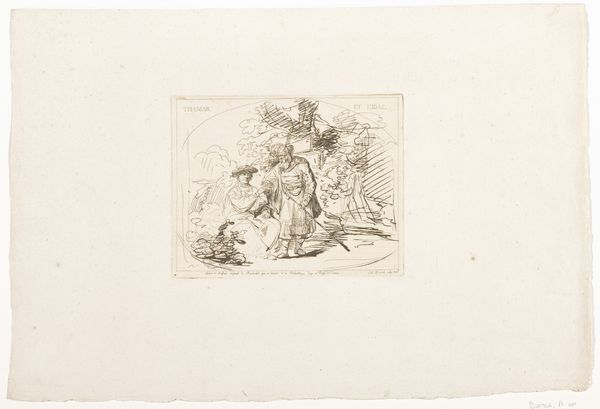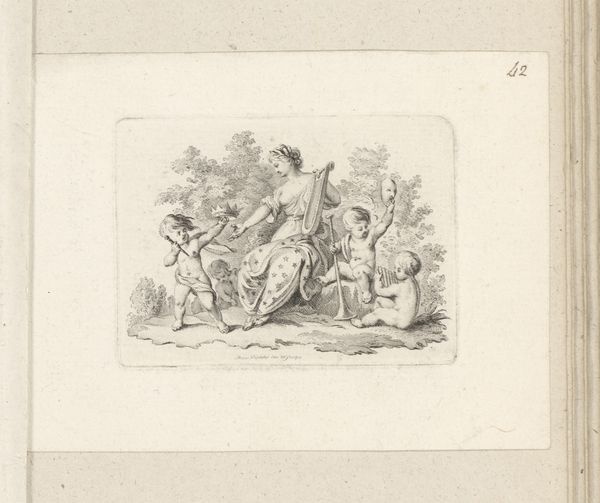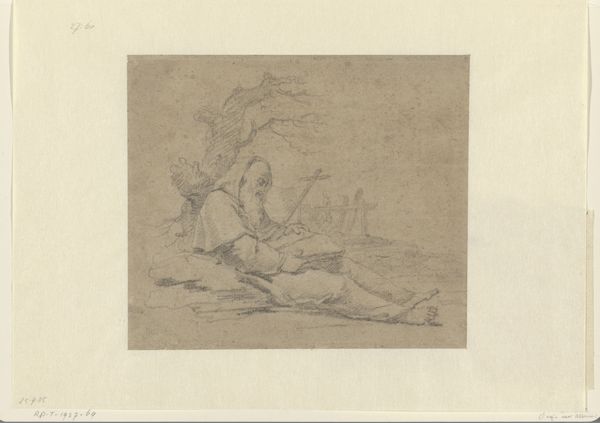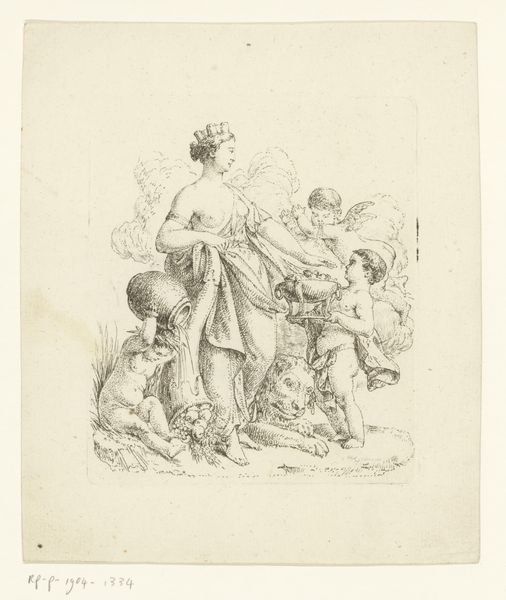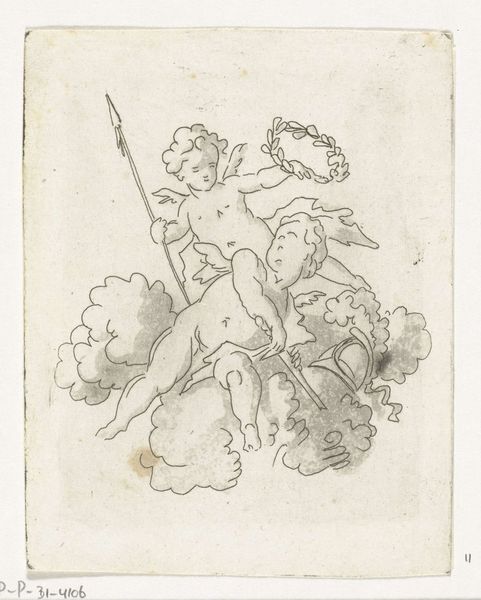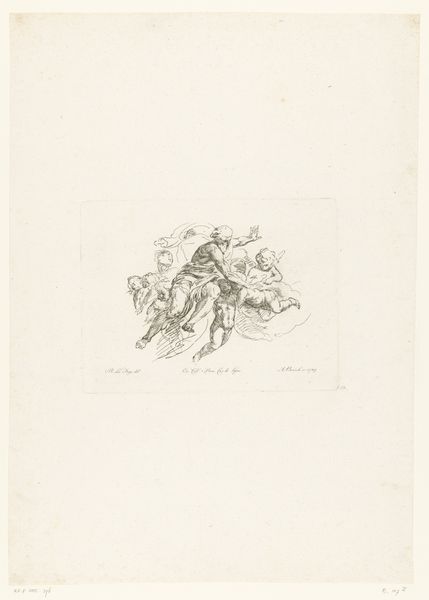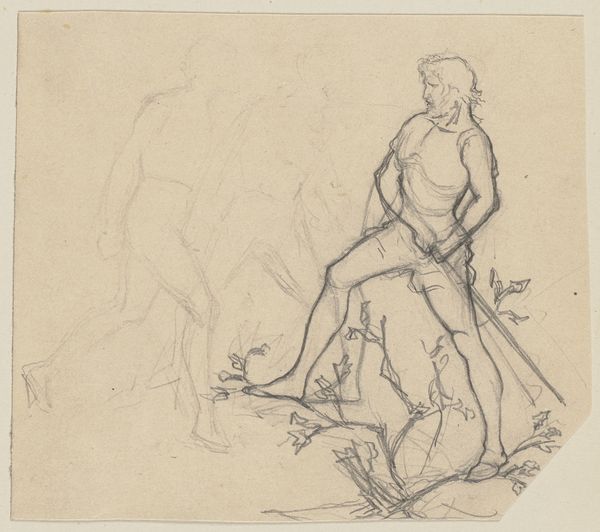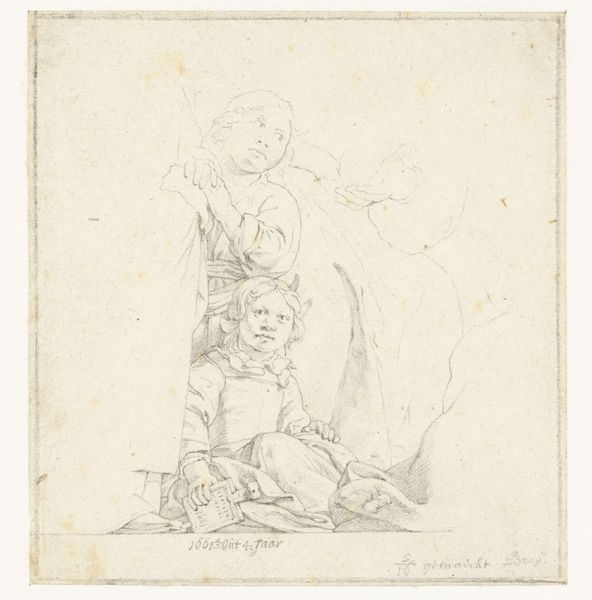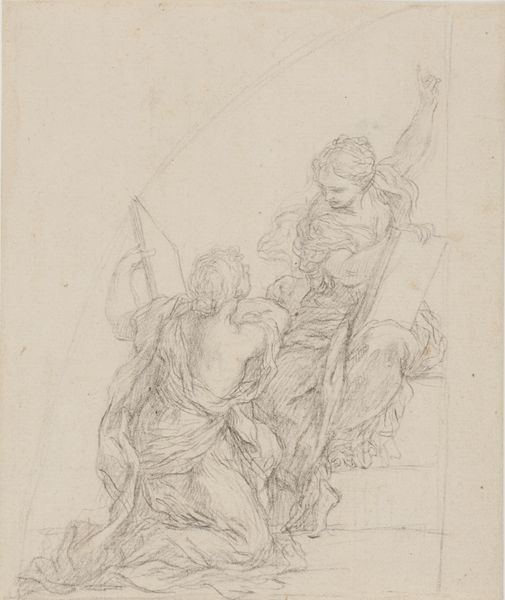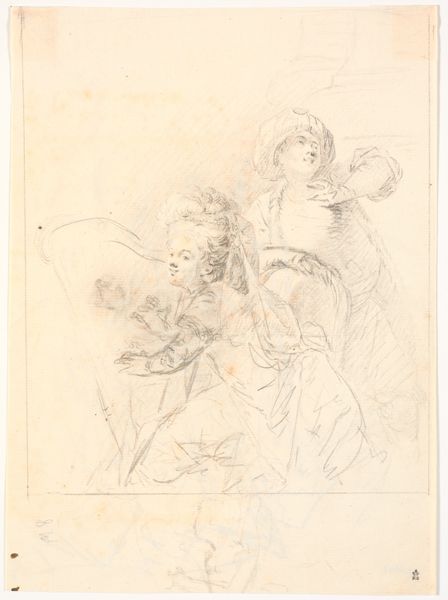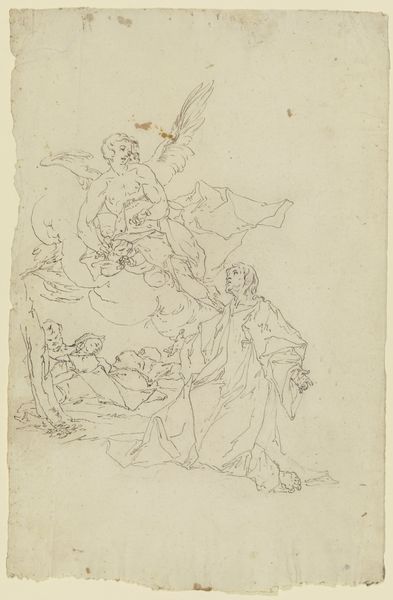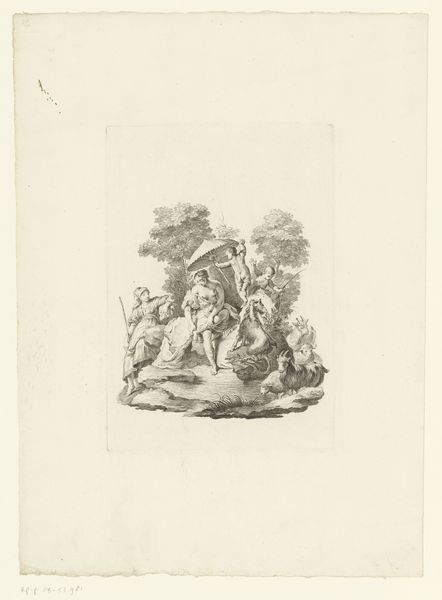
drawing, ink
#
portrait
#
drawing
#
allegory
#
figuration
#
11_renaissance
#
ink
#
13_16th-century
#
history-painting
#
italian-renaissance
#
nude
Copyright: Public Domain
Curator: At first glance, I see what appears to be a preliminary sketch of a goddess and cherubic figure; it’s rather austere and quiet. Editor: We are looking at “Venus and Cupid,” an ink drawing attributed to Jost Amman, currently residing in the Städel Museum’s collection. Its delicate lines portray a classical subject. Curator: The artist’s reliance on ink provides an intriguing look into production of Renaissance artworks. Note how the minimal shading forces us to consider labor itself—each line meticulously rendered on, presumably, expensive paper. I wonder about the specific workshop practices that this piece emerged from, how many apprentices contributed… Editor: Focusing solely on its construction would mean overlooking the rich symbolism that Renaissance audiences would immediately recognize. We see Venus, lightly draped, a gesture of modesty rather than complete nudity, which was still a novel concept. And of course, Cupid, weighed down by his quiver. What do these figures tell us? Curator: It is tempting to think that it provides clues, but my interest lies primarily in how its mode of creation influenced reception. Imagine the market for preliminary drawings; they served to make an art both more exclusive, given the access, but also they became commodities. It complicates the boundary of private versus public appreciation of art. Editor: Yet, there's something timeless in the allegorical representation. The universal themes of beauty and love, suggested by Venus and Cupid. These archetypes still resonate, don’t you think? And observe Cupid's laurel crown - this image celebrates the creative, immortal aspect of love. The power of visual language endures regardless of economic shifts or making practices. Curator: Absolutely, and analyzing the material circumstances adds another important layer of insight. Consider the artist as an entrepreneur in that historical market of Renaissance, not unlike today’s. Editor: Perhaps you've convinced me to examine art beyond its pure iconography. These pieces truly provide such unique windows into how a world saw itself and made beauty a physical entity.
Comments
No comments
Be the first to comment and join the conversation on the ultimate creative platform.
